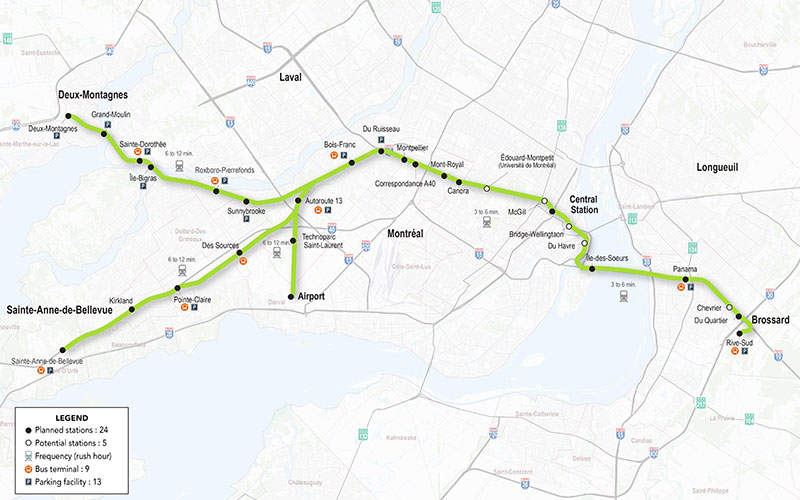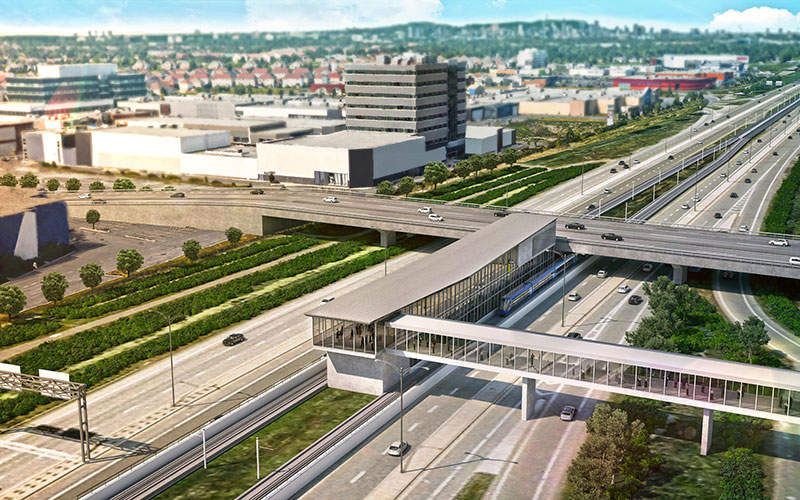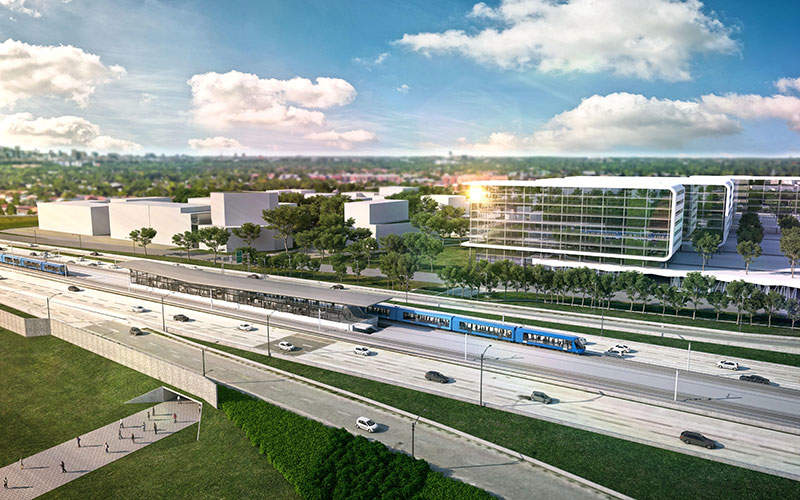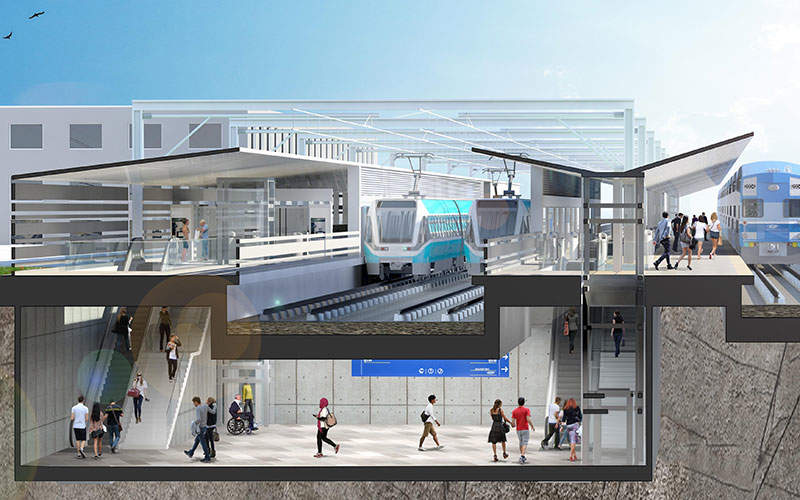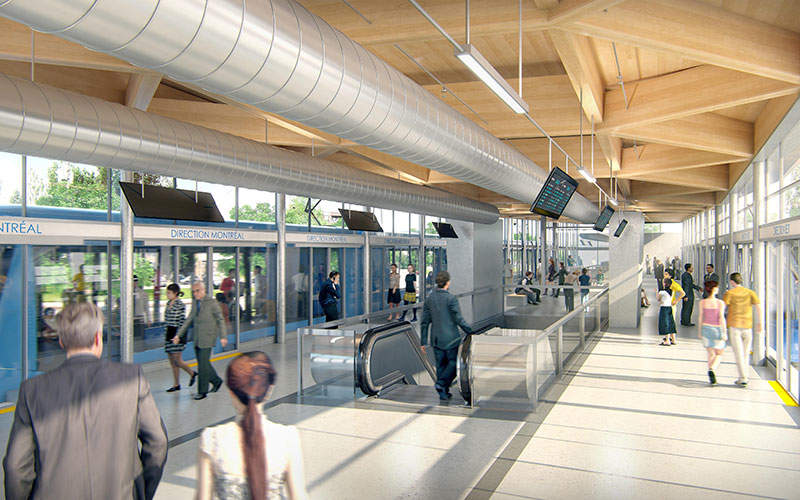Réseau Électrique Métropolitain (REM) is an under-construction fully automated light rail transit (LRT) project that will serve the major metropolitan areas in Montréal, Canada. The project is led by CDPQ Infra, a subsidiary of Caisse de dépôt et placement du Québec.
The new facility will link downtown Montréal, South Shore, West Island (Sainte-Anne-de-Bellevue), North Shore (Deux-Montagnes), and the Montréal-Pierre Elliott Trudeau International Airport.
The project is expected to create approximately 34,000 jobs in Quebec region during the construction phase and more than 1,000 permanent jobs upon the start of operations.
It will also help reduce approximately 680,000t of greenhouse gases over a period of 25 years.
The REM LRT project was announced in April 2016 and construction works began in April 2018. The first trains of the project will enter service on the South Shore to Bonaventure-Central Station section, while the entire network is expected to become operational by 2023.
Réseau Électrique Métropolitain route, design and construction details
With an overall length of 67km, integrating ground, underground and overhead double tracks, the LRT is will become one of the world’s largest automated rail network.
Overall, the LRT network will include 26 stations with three connections to the metro. The LRT will comprise two sections, including the South Shore/Downtown Branch incorporating the A10/Downtown Montréal corridor, and the Western Branch stretching from Downtown Montréal to the Pierre-Elliot-Trudeau Airport, with connections to Sainte-Anne-de-Bellevue and Deux-Montagnes.
The South Shore Branch, with terminal station at Rive-Sud, will cover a total length of 15km and incorporate five stations, two bus terminals and two parking facilities, and involve the construction of 1.3km of new cut-and-cover tunnel and 1.6km of tunnel through rock.
The Western Branch will cover a total length of 52km, and incorporate seven new stations and 12 existing stations, which will be refurbished, seven bus terminals and 11 parking facilities. It will also involve the construction of new tunnel measuring between 2.5km and 6km in length.
The project design provides an option to add five additional stations, including two stations to serve the McGill University and Université de Montréal areas, based on demands in the future.
Each of the enclosed and climate-controlled stations will be accessible by foot, bike, bus and car, and the platforms will be approximately 80m-long. Each station will be equipped with escalators, elevators and platform screen doors and will be Wi-Fi enabled.
The developer has reached an agreement with the Canadian National Railway Company (CN), under which the former has agreed to acquire the aerial structure leading to the Central Station (Viaduc du Sud), long-term use of the Central Station, which will serve as an inter-modal hub, and use of the CN tracks on the Pointe-Saint-Charles sector.
Other major infrastructure will include a centralised control station, rolling stock maintenance and storage facilities, administrative offices, telecommunications facilities, an electrical substation, and bike racks.
Rolling stock of Réseau Électrique Métropolitain project
The project will utilise Alstom-built Metropolis trains on the REM network. Alstom will supply 212 Metropolis cars configured into 106 trainsets for the automatic light-metro system.
Four-car trains will operate on the line during peak times and two-car vehicles will run at off-peak hours. At peak hour, each train will be approximately 76.2m-long and 2.94m-wide with a maximum weight of 232t.
The number of seats in each car is 128 and the system can accommodate maximum 780 passengers.
Powered by electricity supplied through a 1,500V catenary, the automated trains will have a maximum speed of 100km/h and average speed of 51km/h.
Key players involved
The engineering studies for the South Shore Branch were performed by CIMA while the engineering studies for the Western Branch were performed by Hatch Mott MacDonald, as part of the project’s environmental impact assessment (EIA) study.
Other consultants involved in the preparation of the EIA report include Systra, SETEC, Groupe SM, and Canarail.
Steer Davies Gleave performed the ridership studies for the project.
CDPQ Infra awarded the infrastructure engineering, procurement and construction (EPC) contract to the Groupe NouvLR consortium.
The consortium comprises SNC-Lavalin, Groupe Aecon Québec, Dragados Canada, Pomerleau, and EBC. Stantec is supporting the consortium by providing design engineering services for the construction of project infrastructure.
Groupe des Partenaires pour la Mobilité des Montréalais (PMM), a consortium of Alstom Transport Canada and SNC-Lavalin, was contracted to provide rolling stock and systems including their operation and maintenance.
Financing for the automated rail network
The construction costs of the Canadian LRT project is estimated to reach C$6.3bn ($4.85bn). Caisse is investing C$2.95bn ($2.26bn) in the project while the Québec Government’s investment is C$1.28bn ($982m).
Subsequently in June 2017, the federal government of Canada announced a C$1.28bn ($982m) investment in the REM. A 15-year loan agreement worth $982m was secured with the Canada Infrastructure Bank, in August 2018.
Hydro-Québec, a provincial public utility, is contributing C$295m ($226.33m) that will be used for fixed equipment required to electrify the automated rail network.

